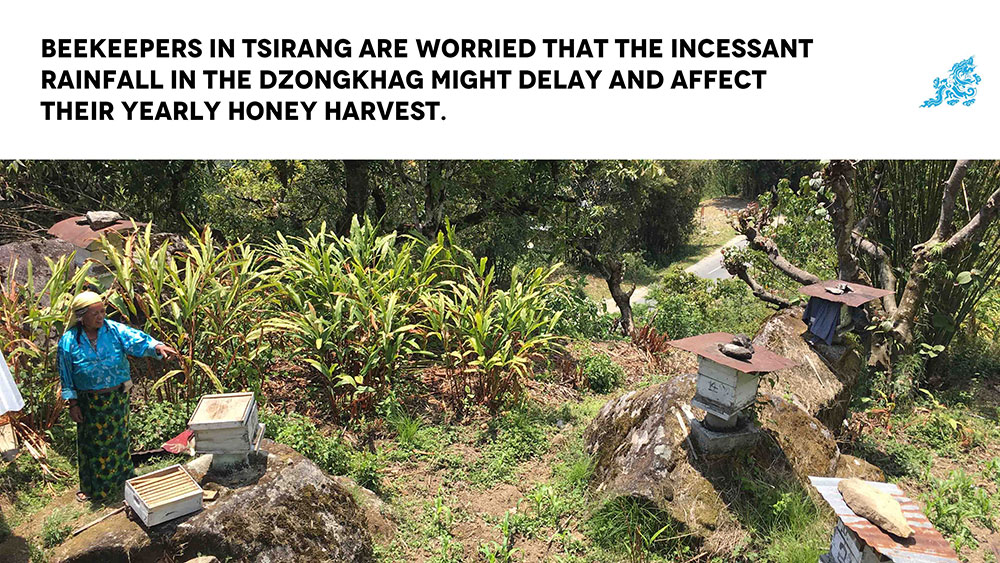Were it not for the consistent rainfall, beekeepers in Tsirang would be collecting the first harvest of honey of the year by now.
In Patshaling Toed, Tshering Wangdi Sherpa has 30 beehives (modern boxes). He has more than 100 beehives placed around his house and farm.
He said that if the rain continues, the production would be affected as it would shred flowers, leaving less nectar for bees. “If not for rainfall, bees could actually produce a good amount of honey this time around as flowers are in full bloom.”
He is worried. “The harvest this time will be delayed.”
Last year, Tshering Wangdi sold 50 bee colonies for Nu 10,000 each. “I made a profit of at least Nu 250,000.”
Tshering Wangdi Sherpa is the chairman of the Patshaling Beekeepers’ Group which was started in 2010. The group had 16 members then. Today, the group has 33 members.
Another beekeeper in the gewog, Gyalbo Dorji Tamang, said that the honey that comes to market from Tsirang was pure. “The success of beekeeping depends solely on weather, rainfall, and flowers.”
The production this year, he said, would drop due to incessant rainfall.
“Bees collect nectar only for their own consumption at the moment,” he said. “When the season is good, we harvest at least 10kg honey from each modern hive and make about Nu 60,000 annually.”
For Gyalbo Dorji, beekeeping is a tradition practised since his great-grandparents’ time.
With increasing demand for honey, he began commercialising it.
The demand for Tsirang honey, despite the global Pandemic, has not declined.
Tshering Wangdi said that farmers now sold honey on their own. They used to sell honey to the cooperative in the past.
Sanja Rani Tamang from Tharkhorling chiwog supplies honey to Thimphu. “A kg of honey could fetch at least Nu 1,000 due to increasing demand these days.”
She supplied about 60kg of honey last year.
She has been into the beekeeping business for more than a decade. She said that beekeeping was one of the easiest businesses as it does not require regular nurturing as with vegetables.
The farmers harvest honey twice a year, in May and between November and December.
By Chimi Dema | Tsirang
Edited by Jigme Wangchuk


